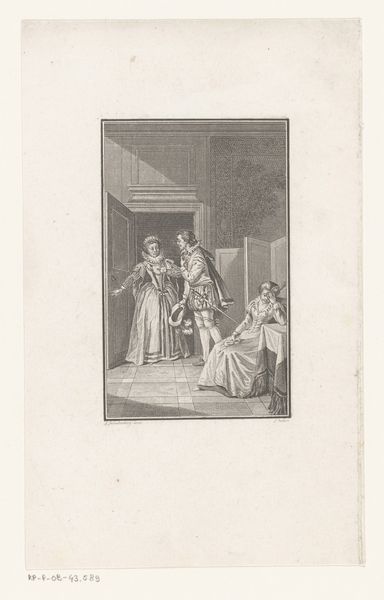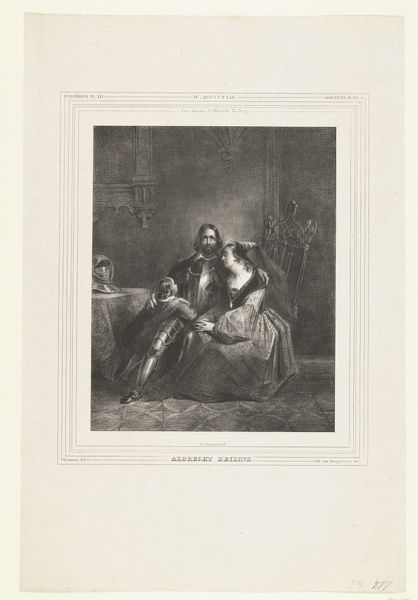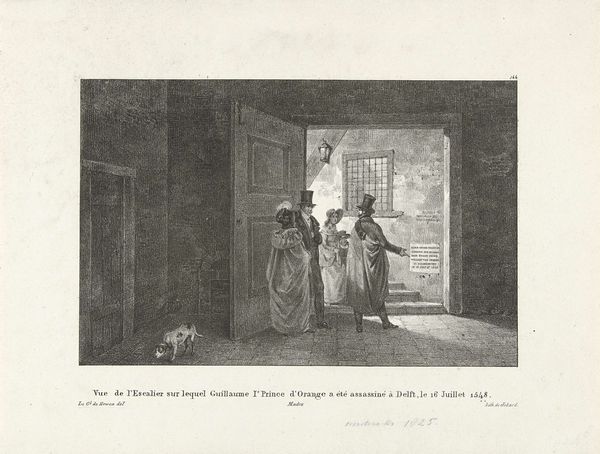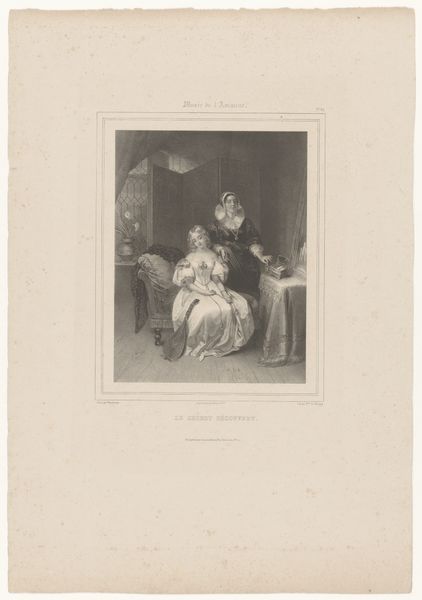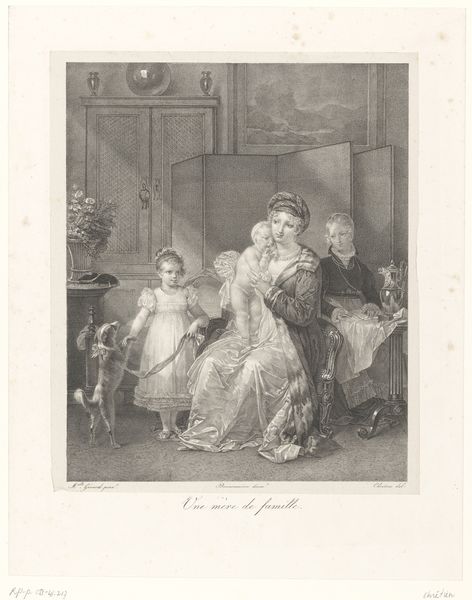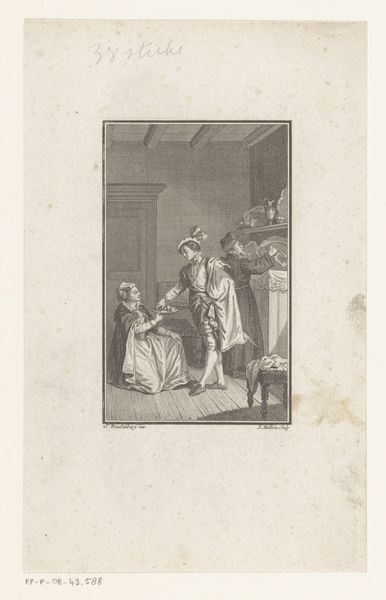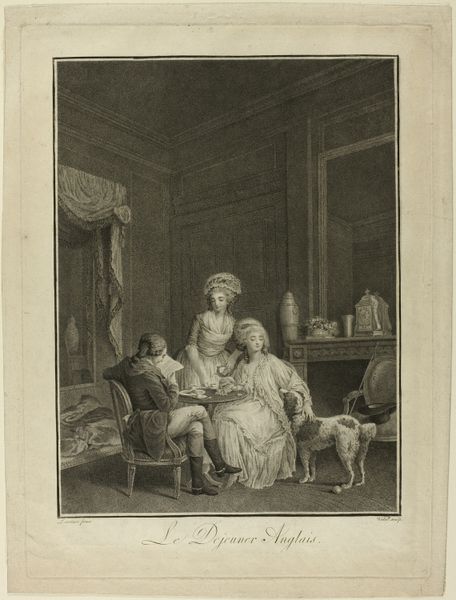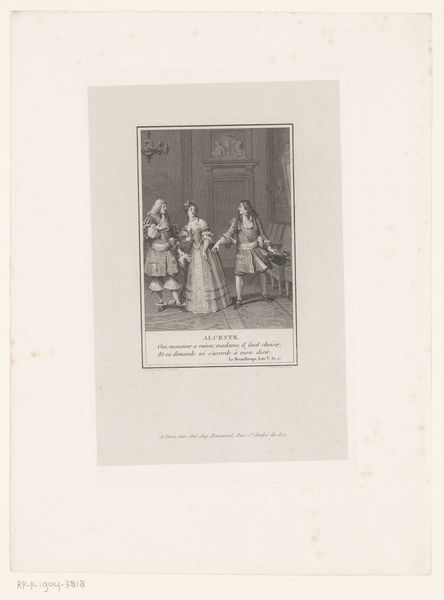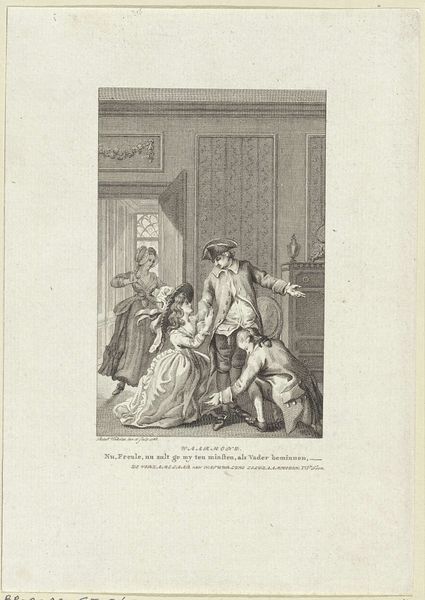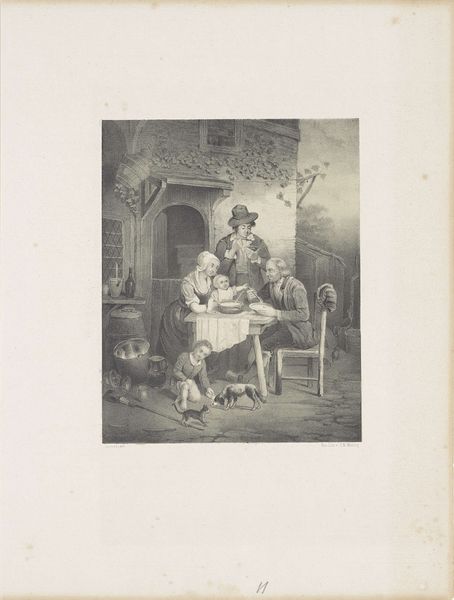
print, etching, engraving
#
dutch-golden-age
# print
#
etching
#
figuration
#
genre-painting
#
history-painting
#
engraving
#
realism
Dimensions: height 543 mm, width 380 mm
Copyright: Rijks Museum: Open Domain
Curator: Welcome. This is an etching and engraving, "Visverkoper aan de deur van een voornaam huis," or "Fish Seller at the Door of a Distinguished House," created in 1833 by Gijsbertus Craeyvanger, now residing here at the Rijksmuseum. Editor: There is something so somber and grey about it, an interior domestic drama on the verge of unfolding. Curator: I am intrigued by your assessment, as I view it as an attempt to bring Realism into the realm of genre painting. The composition emphasizes stark contrasts, almost dividing the social spheres, between the laboring fisherman and those enjoying the comforts of a wealthy home. Note the architecture: the stark geometrical planes, repeated rhomboid tiles on the floor and rectangular door, offset the soft rounded forms of the figures. Editor: Yes, it does speak volumes, especially when contextualizing Dutch society during that period. The almost exaggerated contrast between the richly dressed woman and the working-class fisherman creates an implicit narrative about economic disparity. I am also intrigued by the children and dog in the doorway – figures situated literally and metaphorically at the liminal space between those separate social worlds, especially if we recognize the symbolic role of the domestic pet, there as some sort of symbol of status. Curator: An interesting point about the placement and contrast of the characters. What do you infer from the fish itself? The lines seem so precise in their depiction; the forms of the scales clearly defined, with attention drawn to how the light refracts along each little bone of each specimen of seafood! Editor: Perhaps, even the act of purchasing fish becomes symbolic of social interactions and dependencies. Who profits and at whose expense? It speaks to questions of class and access, wouldn't you say? Note, as well, the almost obscured figures peering out into our visual frame on the other side of that threshold behind the fisherman: clearly, these are liminal characters looking outward at us, who can barely return the look and gaze on *them*. We viewers have little real way of encountering this hidden group here, but they may very well be other children of working folk who lack the clean attire and leisure of that pampered family within the grand interior. Curator: Yes, that adds further depth to this interpretation. But by directing the viewer's attention through a detailed scene and meticulous composition, one can discern new patterns or codes about the subjects on display. Editor: Ultimately, it is about more than aesthetic representation, however masterfully rendered. This piece serves as a document and cultural commentary of its era. We should question power dynamics inherent to how this print functions as both artwork and historical record.
Comments
No comments
Be the first to comment and join the conversation on the ultimate creative platform.
